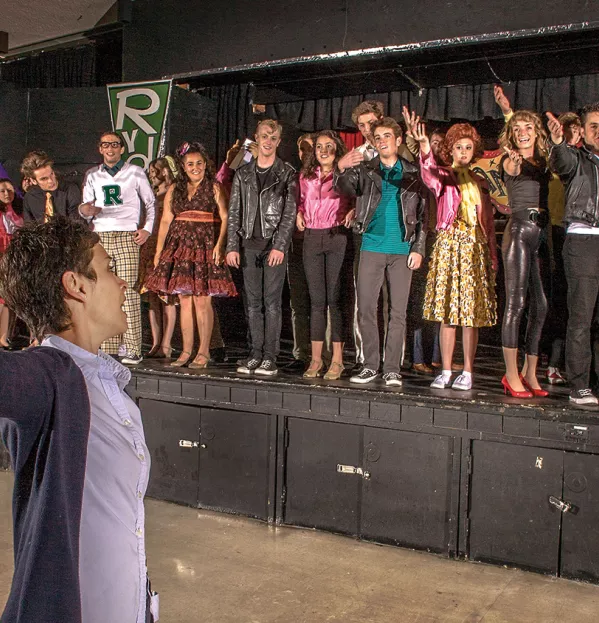Don’t stem creativity by leaving out arts subjects

To Stem or to Steam? That is the question. Put another way, why do debates around science, technology, engineering and maths seem to squeeze out the arts - to reduce “Steam” to “Stem”?
The arts should matter in our education system, and here’s why.
In my teaching career, I have worked in two national centres of excellence - one in music, one in dance - and lectured in further education with students who have gone on to work with some of our national arts companies. I have seen, probably more than most educators, the effect specific training can have on students who move on to national drama, dance and music schools, who then work in TV, film and theatre, and in doing so contribute to the UK economy, as well as creating a cultural impact. Most importantly, I have seen how the arts can have an effect on mainstream students, including intellectual development (such as memory, attention and concentration) and skills for life (self-esteem, confidence, resilience, communication and teamwork).
As a faculty head of expressive arts, I have always seen the importance of the subjects in preparing young people for later life. Creativity, one of the key skills needed for future careers, is a vital outlet that inspires students to see who they are and what they can accomplish. So why is the Scottish government pushing Stem subjects ahead of the arts? Why do we not insert the arts into the acronym, to create Steam rather than Stem?
Artists and scientists share the ability to look at the world differently, to pave the way for new types of art or scientific solutions. Yet, the autonomy of headteachers across the country and a narrowing of the curriculum have meant that learners aren’t always able to fulfil their potential in their educational journey. We are all aware that learners can opt for three sciences in the senior phase, but not all students can opt for three art subjects. Indeed, some schools don’t even offer all the art subjects; drama, in particular, tends to suffer.
We need both science and the arts. Ideally, we should have Stem graduates who have integrated the arts into their scientific studies, and artists who understand the sciences. We should be promoting greater interdisciplinary and multidisciplinary teaching and learning; it is a complex world and we need to understand the interconnections between science and the arts.
Apple co-founder Steve Jobs loved to talk about the intersection of technology and the humanities, including the arts. In 2010, while introducing the iPad, he said: “It’s in Apple’s DNA that technology alone is not enough. It’s technology married with liberal arts, married with the humanities, that yields the results that make our hearts sing.”
Companies and organisations that want to stay globally competitive realise they need employees who are multidisciplinary, creative thinkers who can collaborate with colleagues. Those qualities are at the heart of staging a play or performing in a jazz quartet. Training in the arts improves our ability to pull together and synthesise seemingly disparate ideas and information in a coherent and meaningful whole. Furthermore, taking an art course or studying art history helps build an aesthetic sensibility that can influence other areas of thinking. Research suggests that creativity is among the top three applied skills sought by business leaders today - so why are we not nurturing it?
Traditional systems of teaching and learning are not necessarily providing young people with the skills they need to make it in the modern world. Many of the more traditional classroom forms of learning, with their boxed-in individual subjects, are ill-equipped to infuse the skills needed for developing creative solutions to difficult problems. In my view, traditional schooling addresses problems of the past, rather than the challenges of the future.
Putting theory into practice
Throughout history, our greatest inventors and scientists have merged scientific knowledge and discovery with artistic creativity. Albert Einstein studied piano and violin as a child and, as an adult, music helped him think things through. When he was having trouble with a scientific theory, he would strike a few chords on the piano or pick up the violin and play, and that would often free up a constructive thought or solution. He stressed the importance of the creative mind, once saying: “I’m enough of an artist to draw freely on my imagination, which I think is more important than knowledge. Knowledge is limited. Imagination encircles the world.”
There’s been a lot said recently about the narrowing of subjects in the senior phase. I strongly believe that it is in the interplay between our subjects that our young people are going to find the latest scientific and technological breakthroughs, to be able to see the links that make the big, bad world go around. If the Scottish government seriously wants to “get it right for every child”, then this focus on science, technology, engineering and maths needs to shift.
A Steam education allows young people to look beyond the traditional subjects, to form exciting new subjects. Bringing the arts in from the cold might just be the special component education needs to expand students’ possibilities in this fast-changing world.
John Naples-Campbell is faculty head of expressive arts at Dyce Academy in Aberdeen
You need a Tes subscription to read this article
Subscribe now to read this article and get other subscriber-only content:
- Unlimited access to all Tes magazine content
- Exclusive subscriber-only stories
- Award-winning email newsletters
Already a subscriber? Log in
You need a subscription to read this article
Subscribe now to read this article and get other subscriber-only content, including:
- Unlimited access to all Tes magazine content
- Exclusive subscriber-only stories
- Award-winning email newsletters